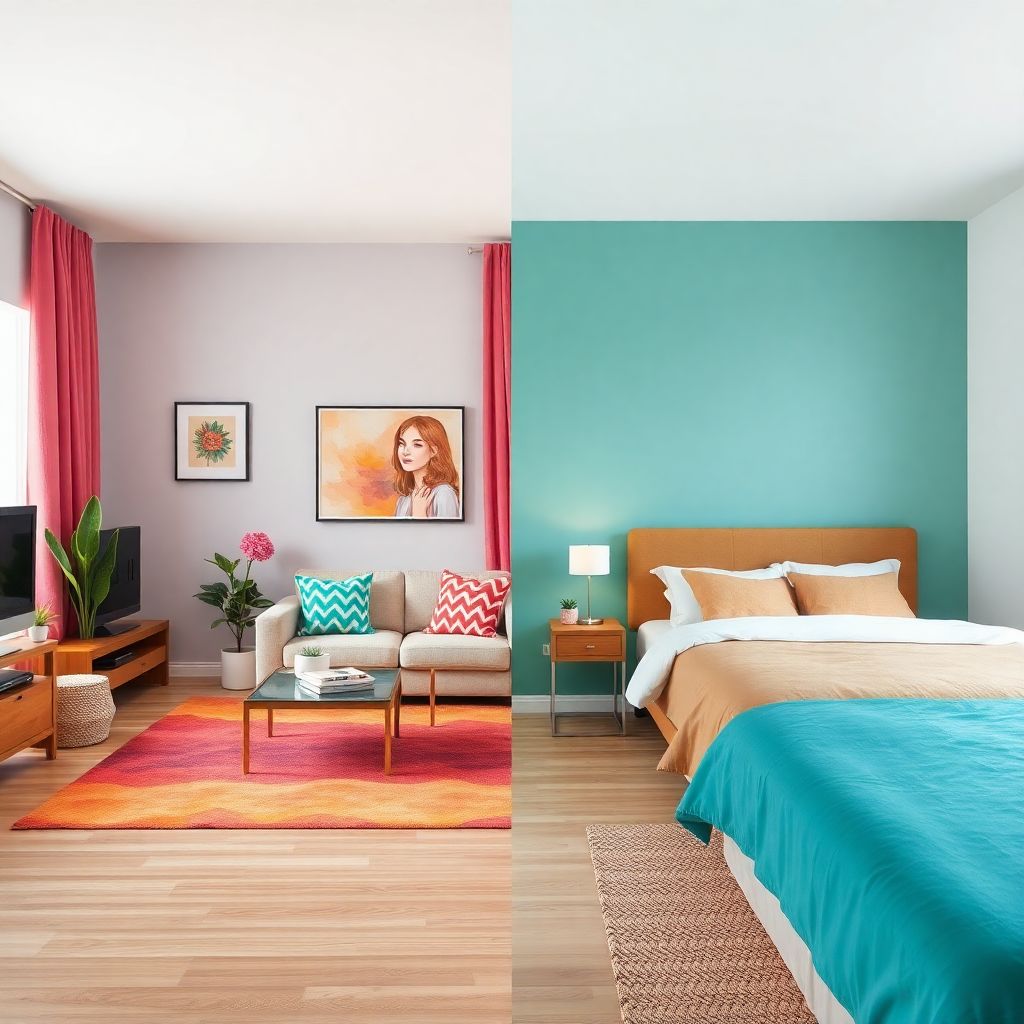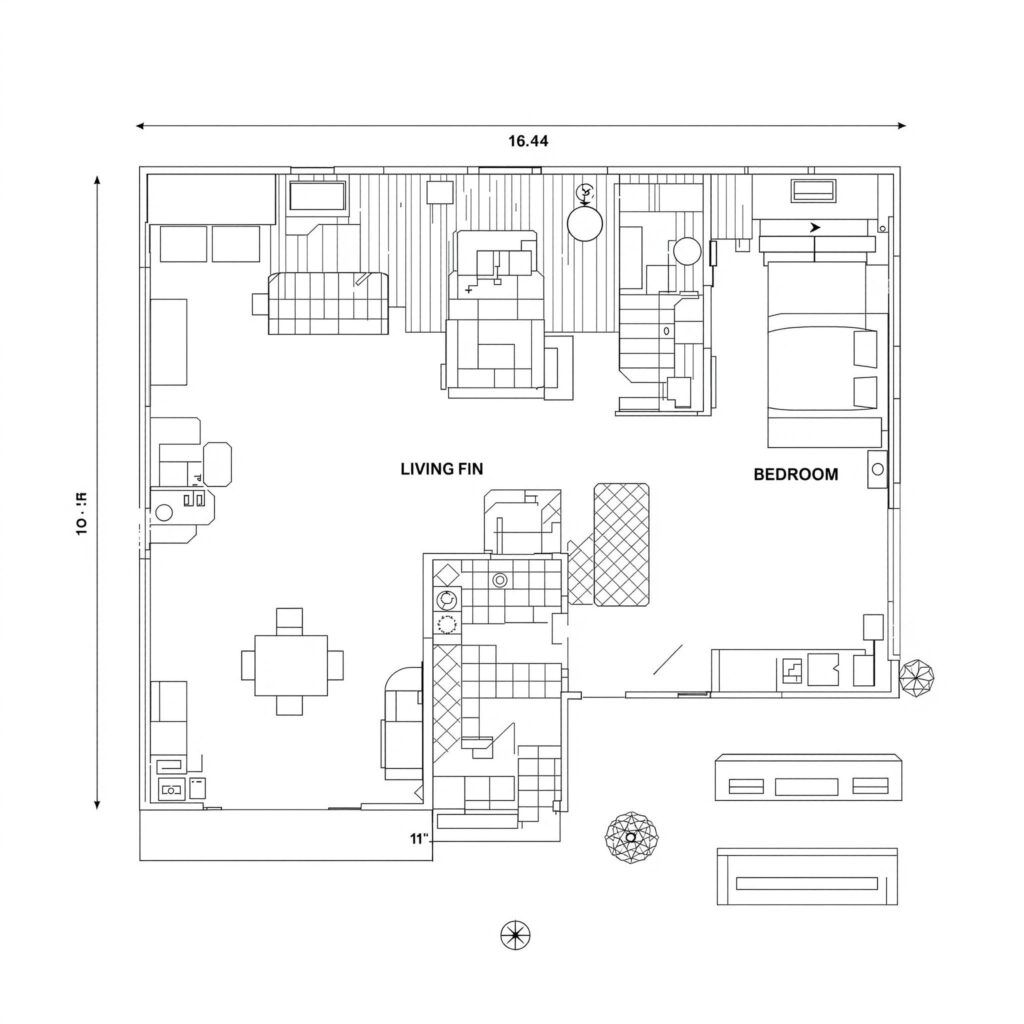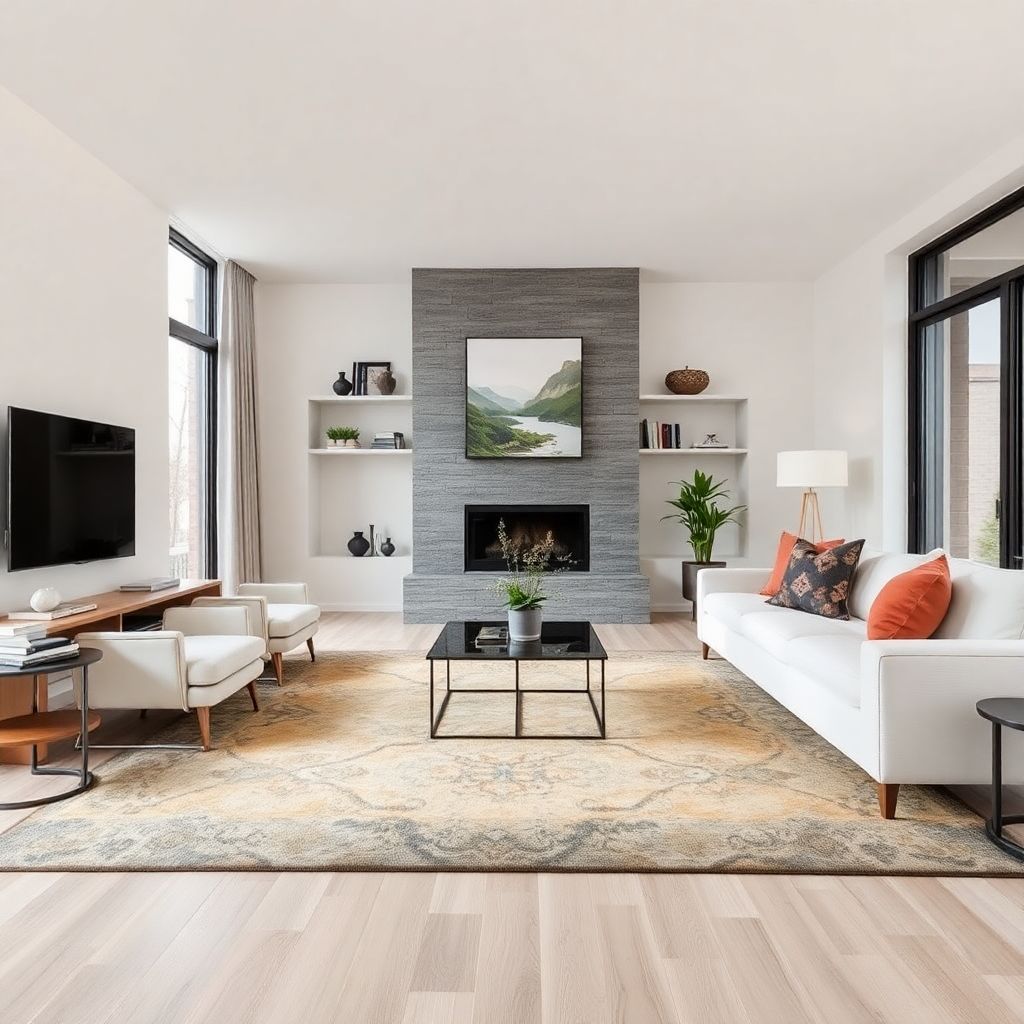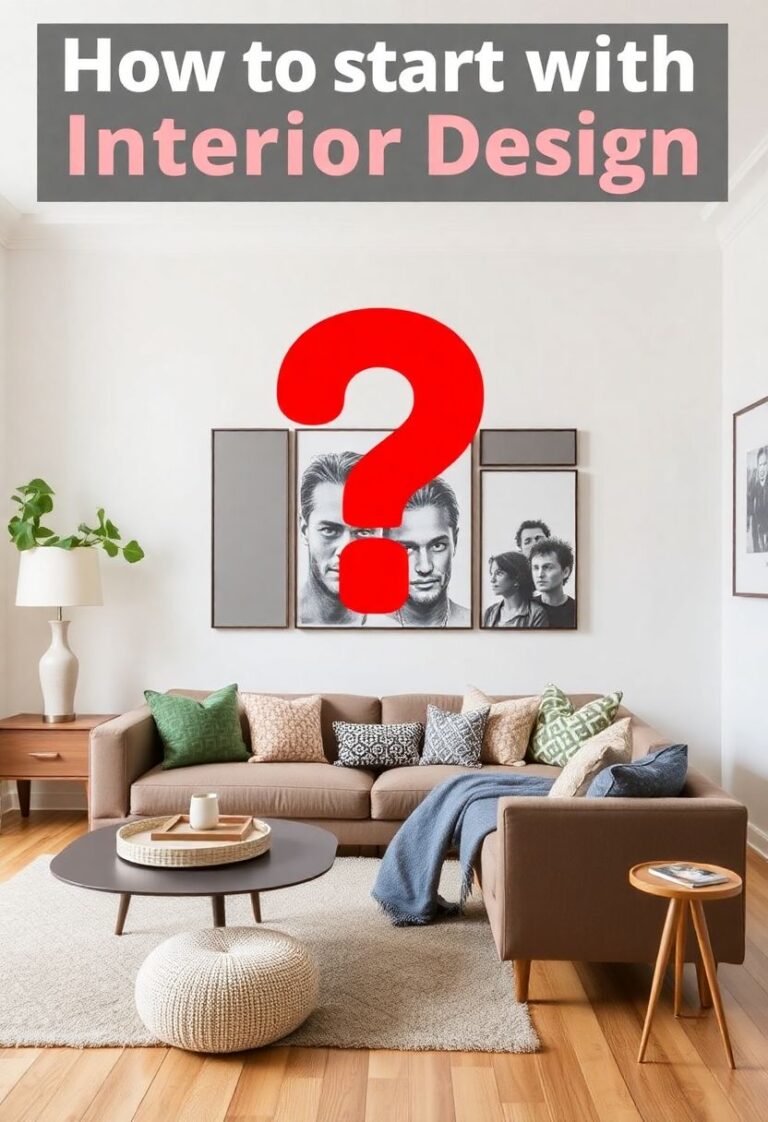Interior design is more than just arranging furniture; it’s about creating a space that reflects your personality and enhances your well-being. Whether you’re moving into a new home or revamping your current one, starting from scratch can be overwhelming.
This small guide will walk you through the key principles and practical steps to help you get started on your interior design journey.
Design Fundamentals: The Building Blocks of a Beautiful Space
Understanding the basics of design will give you a solid foundation to create a cohesive and aesthetically pleasing space.
- Color: Warm colors (like oranges) and cool colors (like blues) can work together harmoniously. Consider the underlying tones to maintain consistency. See our article about the Color wheel for more help with colors.
- Value: Experiment with different shades of the same color to add depth without chaos.
- Texture: Mix textures (smooth, rough, soft, hard) to create visual interest.
- Balance: Ensure symmetry or use size and placement to avoid a lopsided feel.
- Unity: Maintain a theme, like consistent wood tones or metals, to tie the room together.
- Emphasis (Focal Point): Highlight a statement piece or area to draw the eye.
- Movement/Flow: Plan the space to guide the eye and ensure smooth traffic.
- Pattern: Use patterns in fabrics or repeating elements for rhythm.
- Scale/Proportion: Ensure furniture sizes align with the room and each other.
Design Styles: Finding Your Aesthetic
Exploring design styles (Modern, Rustic, Industrial) can inspire your vision. While it’s good to start with a style, remember mixing is encouraged for personalization. Use online resources to find what resonates with you and use specific terms when searching for ideas. Some resources I find helpful:
- https://www.decoraid.com/blog/interior-design-styles-definition-2019/
- https://decorinteriorsus.com/blog/resources/style-glossary/
Roadmap to Decorating: A Step-by-Step Approach
Step 1: Define the Room’s Purpose
Ask yourself how you want to feel in the space. For a calming bedroom, consider earth tones and soft textures. For a lively living room, opt for vibrant colors and open layouts. Ask yourself what the purpose is of the room you are decorating.

Step 2: Gather Inspiration
Create a Pinterest board or collect images. Focus on underlying principles rather than exact items. Limit your images to avoid overwhelm.
Step 3: Plan the Layout
Measure your space and sketch the layout. Consider doors, windows, and large furniture. Avoid common mistakes like overcrowding or placing furniture too close to walls.

Step 4: Select Furniture
Start with anchor pieces like a bed or sofa, then add medium elements (tables, shelves), and finish with accents (lamps, throws).
Step 5: Solve Problems Individually
Tackle one area at a time. For example, find a tall piece for a corner rather than overwhelming yourself with the whole room.
Step 6: Embrace the Cocktail Party Concept
Ensure furniture and decor “talk” to each other through a common element, like a rug that ties together different colors.

Step 7: Take Your Time
Rushing leads to clutter. Let your space evolve, allowing each piece to be a thoughtful addition.
Interior design is a journey, not a race. With patience, your space will reflect your unique style. Embrace the process, experiment, and enjoy creating a home that truly feels like yours.
